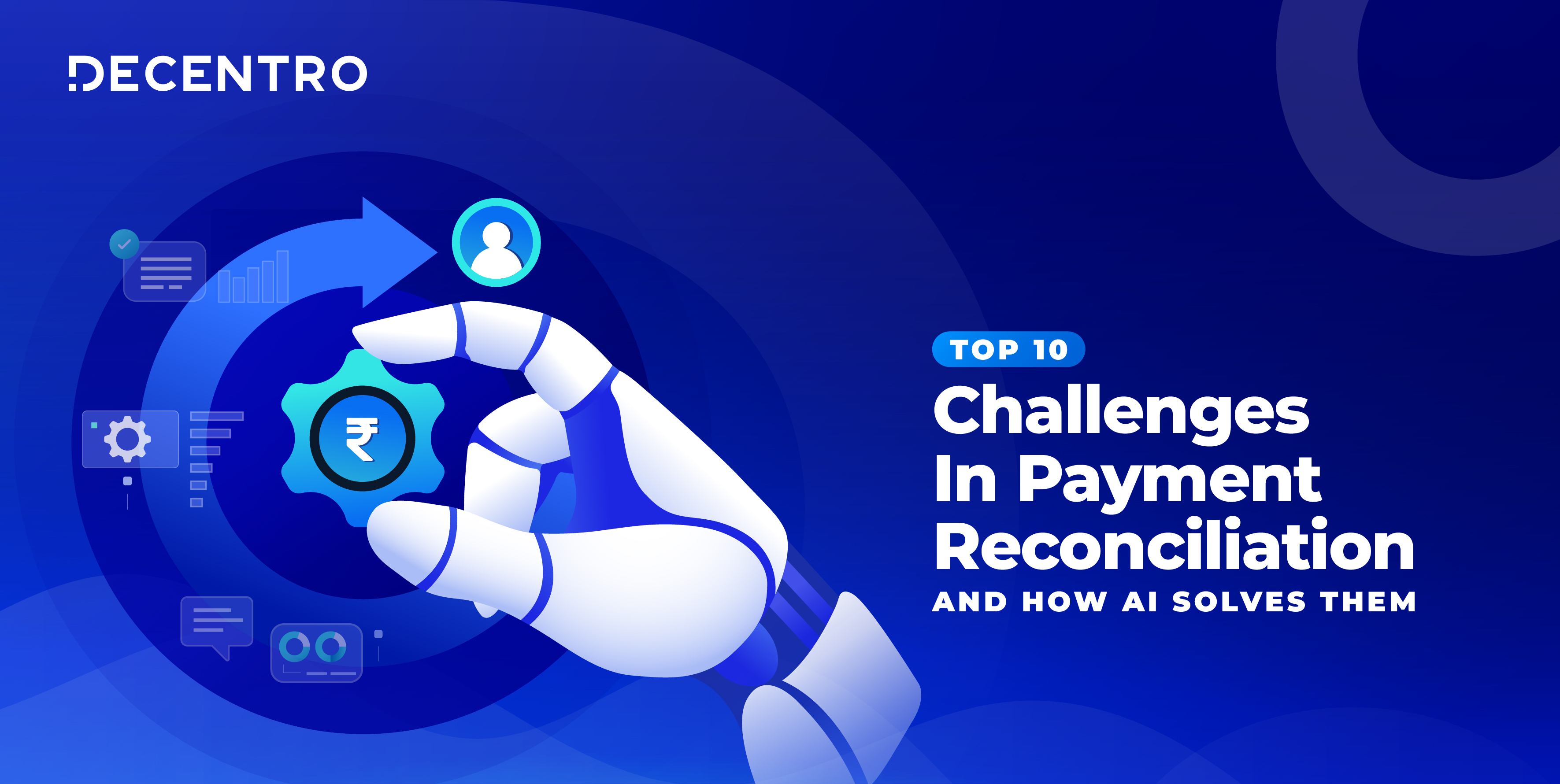Discover the latest trends in subscription models, from flexible pricing to hybrid options, and learn how they can drive growth and customer loyalty.
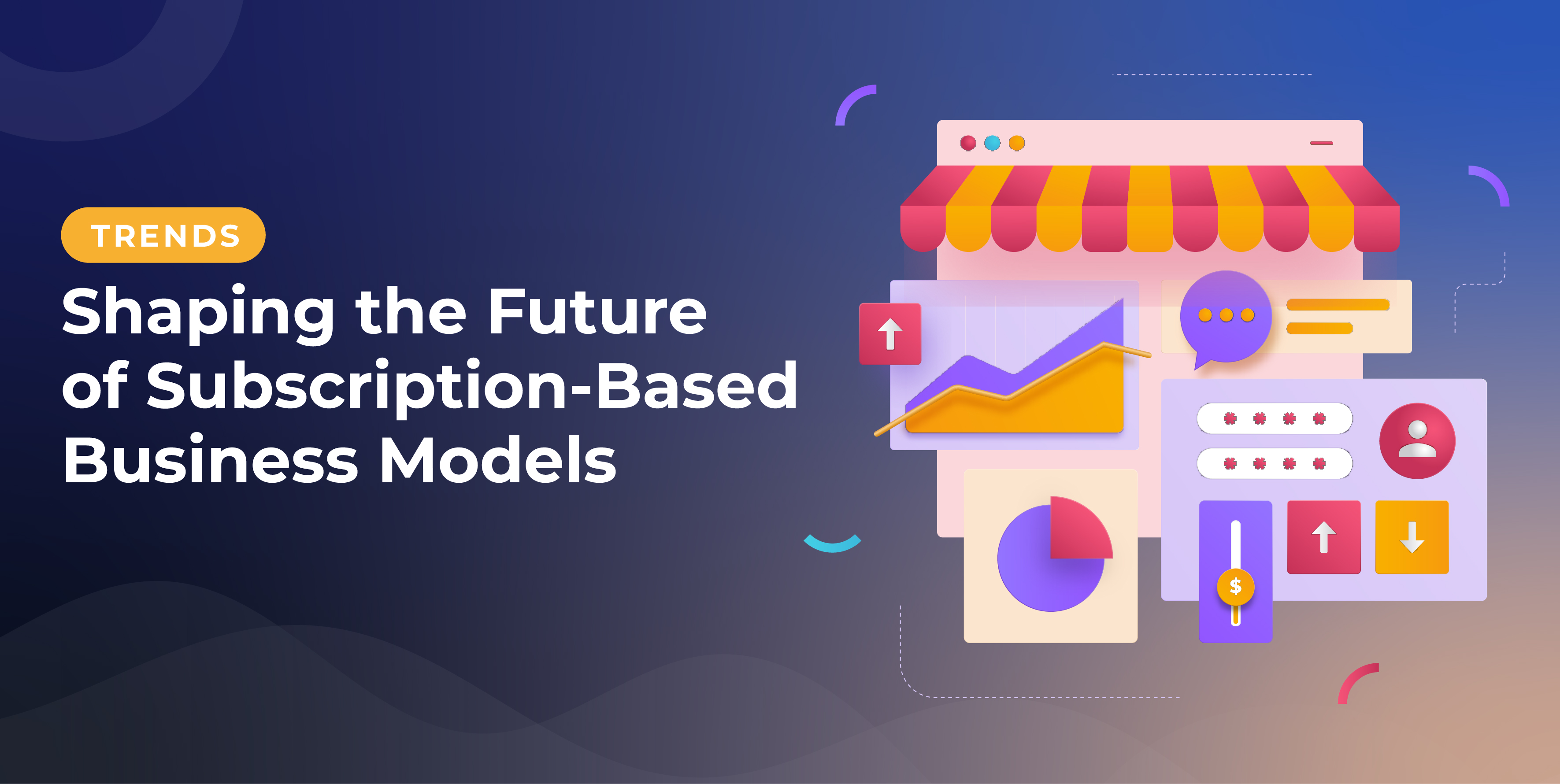
Trends Shaping the Future of Subscription-Based Business Models
Mia Rudic is a content marketing maestro hailing from sunny South Serbia. Specializing in referral marketing and UGC content, she brings brands to life on platforms like Reddit and Quora. Mia’s expertise shines in her published works on GTM and SEM. When she’s not crafting engaging content, she’s enjoying her morning coffee and the sunny vibes from her home office.
Table of Contents

Subscription-based businesses are on the rise, and the numbers prove it. According to recent research, this economy will be worth almost $1 trillion globally by 2028.
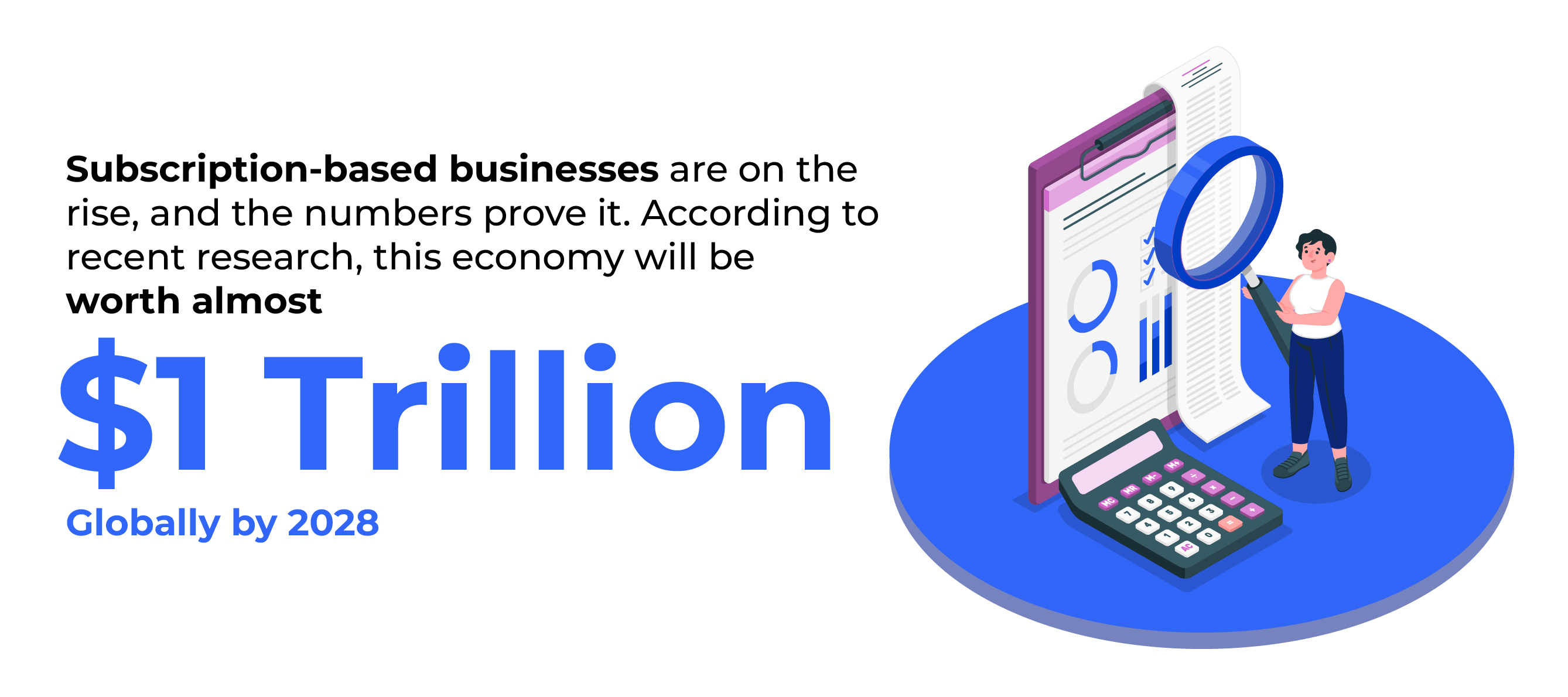
This impressive stat shows that customers increasingly lean toward services they can subscribe to, valuing convenience, variety, and personalized experiences more than ever.
While the numbers are optimistic, this also means you have fierce competition, and standing out is not as easy as it used to be. That’s why you need to keep up with the latest trends and, more importantly, have a clear idea and plan for implementing them in your business model.
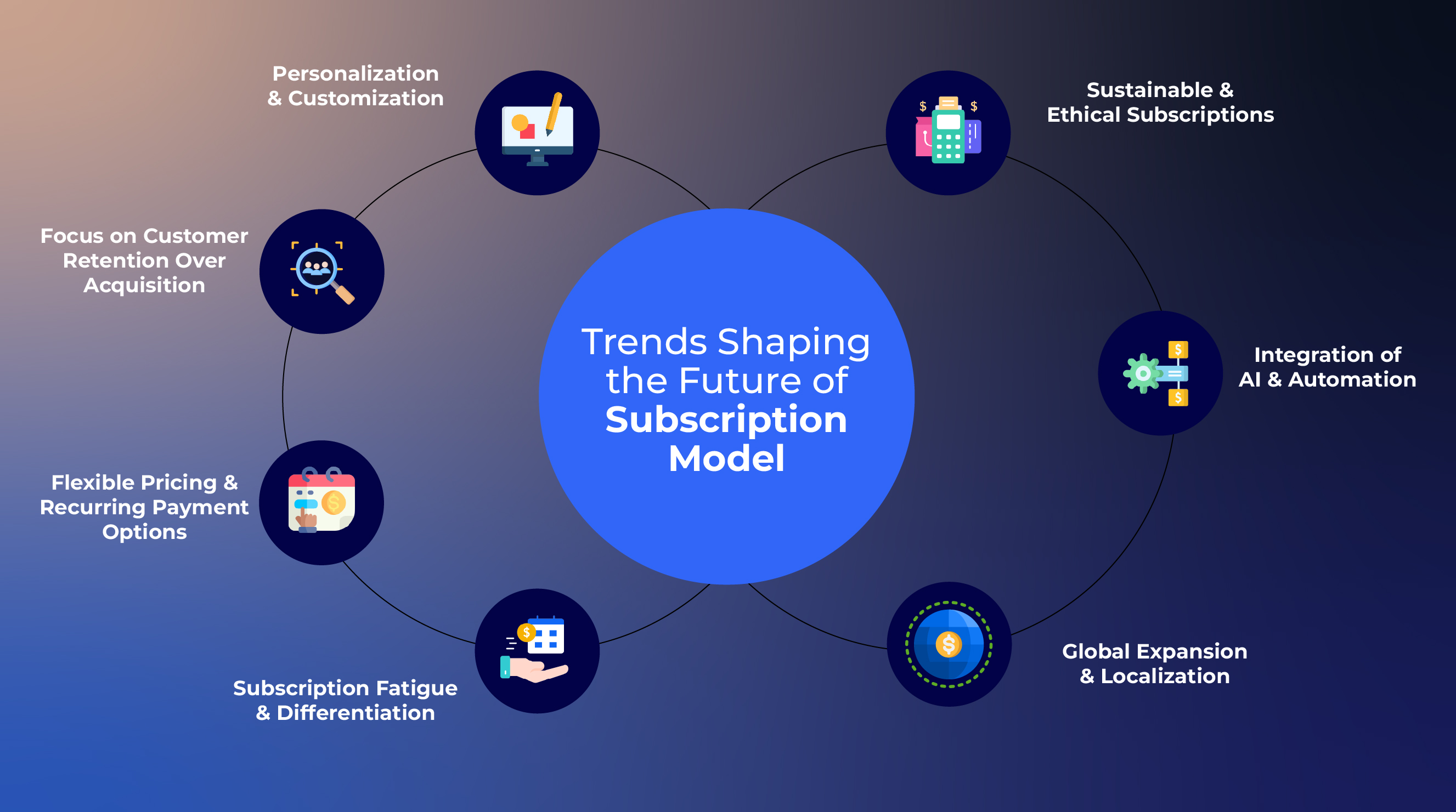
Personalization and Customization
We are starting the list of trends with the most obvious but often overlooked one – personalization. Customers want experiences that feel tailored to them. Gone are the days of one-size-fits-all subscriptions. People expect businesses to understand their needs to the core and offer something unique that looks like it was created just for them.
That’s where personalization comes in. Companies use data to track what their customers like, how often they use a service, and what keeps them engaged. With this information, they create personalized recommendations, product offerings, or content that feel just right.
Customization goes even further. Some allow subscribers to pick and choose exactly what they want. Whether selecting the number of products in a box or curating a playlist of favorite shows, customization gives users more control over their subscriptions.
To expand your subscription-based business model, use customer data to offer personalized recommendations or services. Give your subscribers options to customize their plans, and watch as customer satisfaction (and subscription numbers) rise. When people feel the business values their choice, they’re more likely to stay.
Focus on Customer Retention Over Acquisition
Another trend shows us that it’s more cost-effective to keep customers than to look for new ones constantly. In fact, studies show that acquiring a new customer can cost five times more than retaining an existing one. Loyal subscribers provide steady recurring revenue, which is the foundation of any successful subscription-based business.
Retention also builds brand loyalty. Customers who stick around are more likely to spread the word and become your brand advocates. That’s why many business owners say,
- “Happy subscribers are worth their weight in gold.”
What can you do? Focus on strategies that keep your current customers happy.
- Implement loyalty programs that reward long-term subscribers.
- Offer proactive customer service so any issues are handled quickly.
- Use engagement tactics (personalized emails or special offers) to keep them engaged and reduce churn rates.
The chart below highlights the differences in customer acquisition and retention costs, as well as the probability of selling to new versus existing customers over recent years. This data clearly shows why retention is often the smarter investment for sustained growth.

Data Sources: Invesp, Userpilot, Markinblog
Flexible Pricing and Recurring Payment Options
Customers want choices that fit their budgets and needs. Offering different pricing levels gives them the flexibility to pick a plan that works for them, whether it’s a basic package or a premium one with added benefits. This approach attracts a wider audience, allowing customers to upgrade or downgrade their subscriptions as their circumstances change.
Providing flexible options also builds customer loyalty, as subscribers feel they have control over their commitment. Recurring payment options, like monthly or annual plans, make it easier for them to manage payments while staying engaged with your service.
You can start offering tiered pricing models that cater to different customer needs. Also, introduce recurring payment plans that give your customers the choice of paying monthly or yearly. This flexibility helps you increase retention and appeal to a broader audience.
The Rise of Hybrid Subscription Models
The next trend on our list focuses on blending subscription services with one-time purchases to create hybrid models. This approach offers the best of both worlds — recurring revenue from subscriptions and the ability for customers to make occasional purchases. Hybrid models are especially valuable for companies looking to diversify their income streams while providing more flexibility to their customers.
However, managing both subscriptions and one-time purchases will require careful resource management. Businesses need to practice resource leveling to ensure their teams and inventory are balanced across both offerings. By using resource allocation strategies, companies can avoid overloading their workforce or running into supply shortages.
This proactive approach to resource leveling will help you maintain smooth operations and ensure that your business can meet the fluctuating customer demand without disruptions.
Subscription Fatigue and Differentiation
There is one palpable trend going around—too many subscription services. That trend gives users a lot of options to choose from, but it also means your (potential and existing) consumers are more selective about where they spend their money. This phenomenon, known as subscription fatigue, makes it harder for brands to keep subscribers engaged and loyal.
To stand out, you need to focus on providing unique value and offering something your competitors don’t. This could mean adding exclusive access to content, creating premium features for top-tier subscribers, or delivering a personalized experience that makes your service feel irreplaceable.
Give your customers a reason to stay subscribed and engage them for the long term.
Sustainable and Ethical Subscriptions
New generations of consumers prioritize sustainability because they are aware of the environmental challenges we face, such as climate change and pollution. People want to feel that their purchasing decisions make a positive impact, and supporting businesses that go hand in hand with their eco-friendly practices helps them contribute to solutions. So, aligning your subscription models with these values can give you a competitive edge.
One easy way to integrate and promote sustainability is to use QR codes and cut down on printed materials. For example, instead of including paper instructions or promotional flyers in each shipment, you can use a QR code that links customers to your digital content. On the one hand, you will save paper and promote the idea that your business cares for the environment, but you will also engage your customers more and create an interactive experience. Imagine sending out eco-friendly packaging with a scannable code that gives your customers digital instructions. The next level would be providing tips on recycling or repurposing the box.
Small changes like this one can deeply resonate with eco-conscious subscribers.
Integration of AI and Automation
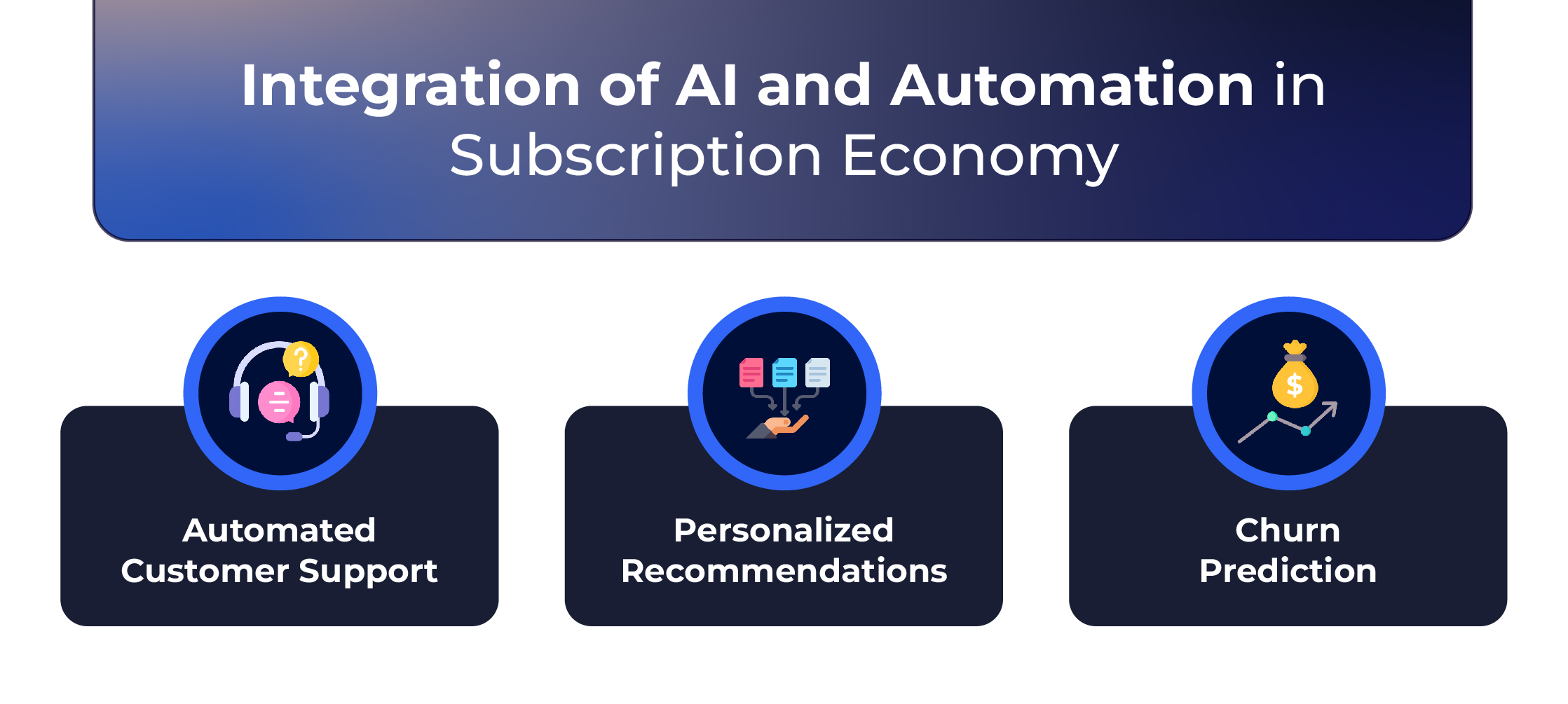
As in most fields and industries, automation and AI are becoming essential tools for subscription businesses, and for a good reason. These technologies make everything run more smoothly, from managing payments to predicting customer needs. By using AI, you can deliver a more personalized experience, improve operational efficiency, and keep your subscribers happy. Businesses that use AI to understand their customers better have seen up to a 40% increase in customer retention.
Here are a few ways AI and automation can help your business:
- Automated customer support — Chatbots and virtual assistants handle customer inquiries instantly, providing solutions to common questions and problems around the clock. This ensures faster response times, reduces the workload on your support team, and keeps customers satisfied with seamless service, even outside of business hours.
- Personalized recommendations — AI is brilliant at processing a lot of data, which means it can analyze customer behavior and preferences in minutes. This analysis will allow you to offer a more personalized product or service. For example, in eCommerce, a search intelligence solution leverages this data to optimize product discovery, ensuring customers find exactly what they’re looking for. Whether suggesting a new subscription tier or recommending additional products, you will know exactly what your followers want.
- Churn prediction — Some models can follow your customers to the dot and notice patterns that indicate they are more likely to cancel their subscription. By finding these patterns early, you can send targeted offers or discounts to keep them engaged and prevent them from leaving.
Global Expansion and Localization
Expanding your subscription-based business is exciting. It means you are growing and reaching more people, but it comes with challenges. Every region where your business is present has different preferences when it comes to payments, regulations, and even marketing. What works wonders in one country (or a region) might not resonate with subscribers in another. That’s why localization is one of the crucial trends you need to consider.
Adapt your pricing, payment methods, and marketing strategies to suit each specific market to ensure your business thrives internationally.
For example, if you’re managing multiple Google Business locations, it’s important to tailor each listing to the local audience. Let’s say you have subscription services in both the U.S. and Germany. Each region will likely need its own Google My Business page for multiple locations with specific details like local operating hours, payment options, and language preferences. When you customize these details, you make it easier for customers to connect with your brand, no matter where they are.
The Road to Subscription Success
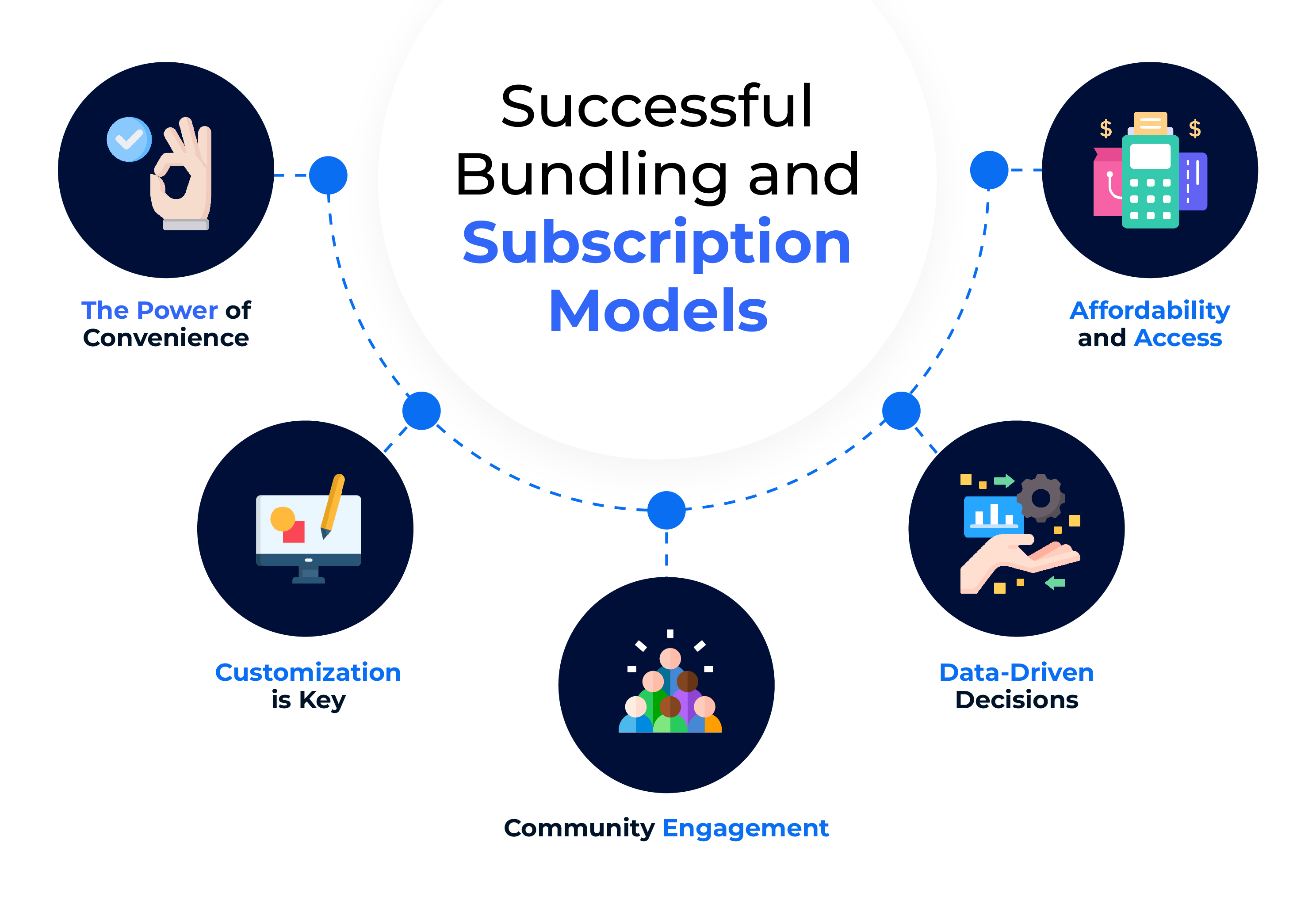
The subscription-based business model is changing fast, and it’s not likely it’s going to stop evolving any time soon. To stand out, you’ll need to keep up with the latest trends, like using personalization, AI, and making your service more sustainable. Customers today expect more from their subscriptions and are unafraid to look for a better solution that meets their needs.
The fact is — the global subscription economy is set to grow even more, so now is the time to focus on what makes your service unique. Whether it’s offering flexible pricing, hybrid options, or tailoring your approach to different markets, adapting to these trends will help you stay ahead. Deliver real value, keep your customers happy, and remember to stay flexible to set your business up for long-term growth and loyalty.
The Decentro Connect
When it comes to enabling businesses in a subscription economy, the one-size-fits-all narrative goes for a toss. The future of any business lies in hyper-personalisation, so naturally, players like us enable those businesses to cater to the same audience.
As a business operating in the subscription economy, Decentro allows you to deploy the mandate stack, which broadly encompasses the capabilities below.
- ENACH is the electronic version of the recurring payments stack built on the NACH platform. ENACH allows platforms to set up mandates of higher amounts with multiple modes, such as Net Banking, debit cards, Aadhaar-based e-sign, etc.
- UPI Auto-pay: This is the recurring payments stack built on the UPI stack. UPI Auto-pay or UPI 2.0, as it is known, allows platforms to set up mandates seamlessly using the collect or intent flow on an app or website for smaller amounts.
Decentro powers both capabilities on its own RBI-approved PA Escrow account and directly on the platform’s bank account as a technology partner.
Decentro’s mandates stack powers the use cases below for platforms to leverage.
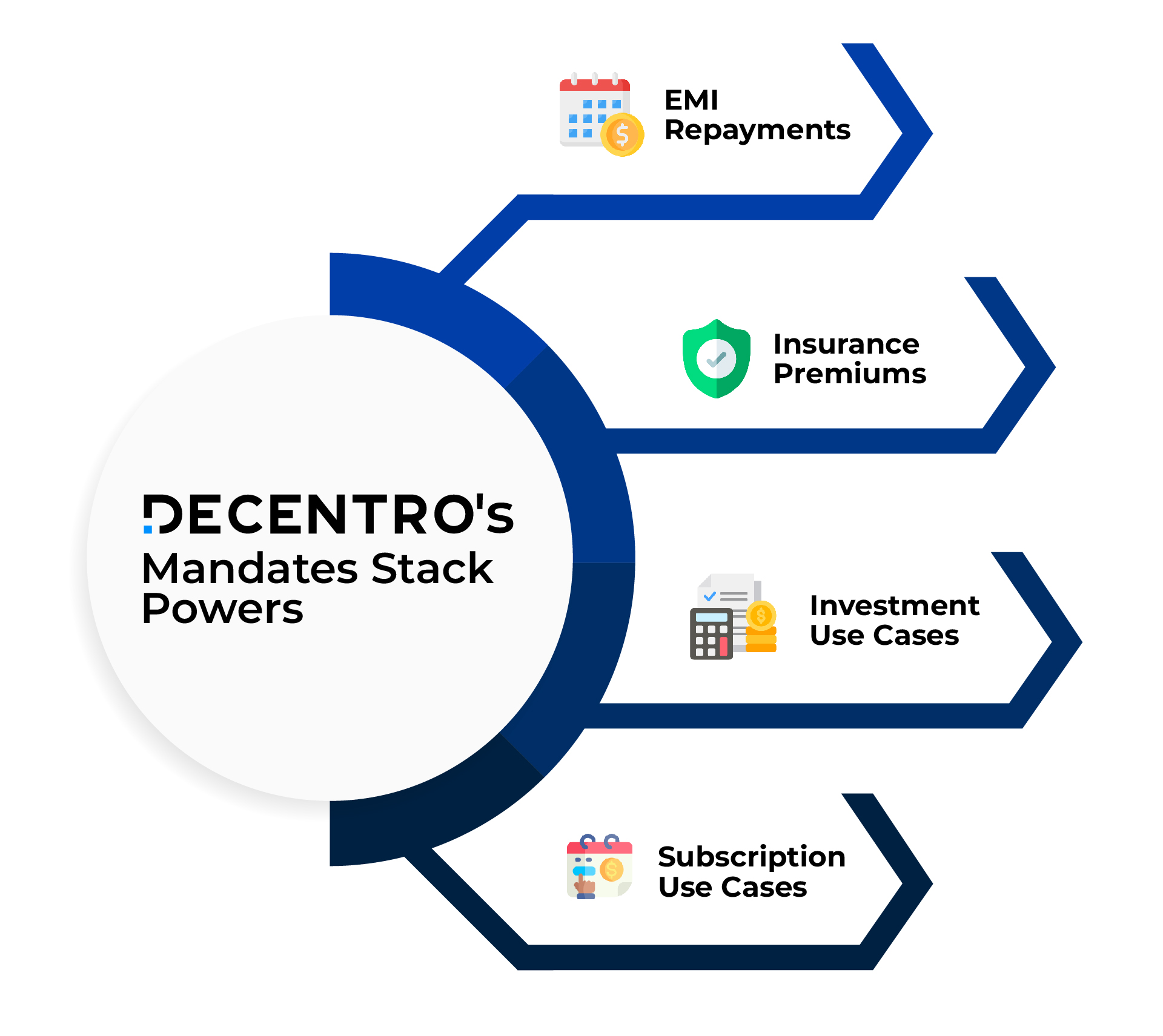
- EMI repayments: This allows lenders like LSPs, NBFCs, SFBs, and even banks to leverage the stack to collect EMIs from borrowers through the NACH or UPI mandates stack.
- Insurance premiums: This allows platforms like insurtechs, life insurance, and general insurers to leverage the stack to collect premiums from borrowers through the NACH or UPI mandates stack.
- Investment use cases: This allows investment platforms like Fintechs, RIAs, and even AMCs to leverage the stack to collect EMIs from borrowers through the NACH or UPI mandates stack.
- Subscription use cases: This allows platforms, like consumer internet platforms, ECOMs, and even offline platforms, to leverage the stack to collect EMIs from borrowers through the NACH or UPI mandates stack.
As a business, if you are looking to venture into this economy and need assistance with recurring collections, drop us a line at hello@decentro.tech, and we will get in touch.

